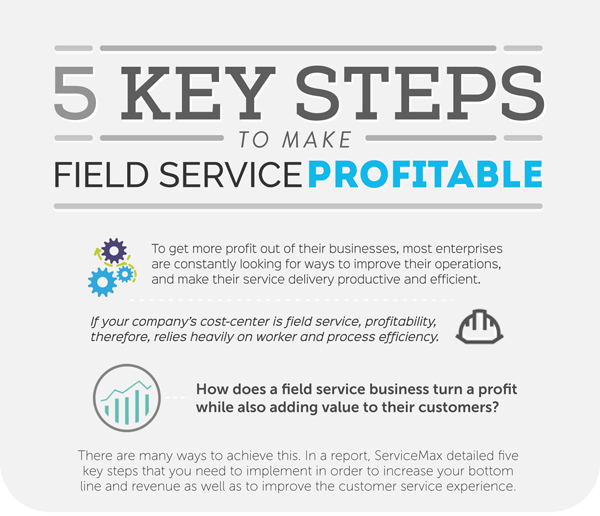In order to improve productivity in your field service business you must firstly define what productivity is. While you may think it’s obvious and that productivity basically refers to how many service calls are dealt with in a given time period, would you be happy to see this number increase but the number of successful first-time-resolutions decline?
This highlights the importance of defining exactly what is meant by improving productivity and importantly, which metrics are relevant and which aren’t. Also, what can be accurately measured and what can’t.
Field Service KPIs
It has been reported that improving key performance indicators (KPIs) used to measure performance has been a top strategic activity for many field service organisations. So what are those all-important field service KPIs? Here are just a few relevant field service KPIs.
Field Visits Completed within SLA
Generally represented as a percentage of the total number of field visits over a given period of time, this metric compares service level agreement (SLA) target response times with actual response times. Ideally the result should be 100% of field visits achieved within stipulated SLA time periods.
Work Orders Completed Per Day
Increasing the number and average numbers of work orders successfully and satisfactorily completed in a day would be an indication of improved productivity. But it’s important that the quality is not compromised in favour of quantity.
First Visit Resolution
Resolving customer issues and complaints on the very first visit makes a significant contribution to customer satisfaction. By monitoring and measuring the successes achieved on first-time-visits businesses can make improvements that contribute toward increased customer satisfaction and customer retention.
Average Time to Completion
By reducing the amount of time it takes to go from receiving a customer call to having the resolution signed off as successful by the client, more customer calls can be successfully handled in a given time period, clearly improving productivity.
How to Improve Field Service Productivity
Having looked at just a handful of relevant KPIs that provide some insight into productivity we can consider what can be done to make improvements.
Centralised Customer Management
An important aspect of productivity improvement is timely and accurate recording of all customer call-out details. A centralised customer management system that’s ideally updated in real-time by field service teams means that managers have direct access to accurate daily field service metrics that enable the assessment and ongoing comparison of performance.
A centralised customer field service management system should be able to readily provide details of all call-outs fulfilled within acceptable SLA defined time periods. It should be capable of reporting daily work-order completions along with ‘first time resolution’ metrics along with ‘average time to completion’.
Field Service Management Reporting
An important aspect of field service productivity improvement is deriving the required information in appropriate formats in a timely manner. Those engaged in field service management may want to see daily reports showing the required KPIs which are being monitored to assess field service productivity.
Field Service Management Software can provide reports, customised to meet specific customer requirements and deliver actionable metrics.
Real-Time Feedback
Feeding back intelligence derived from real-time field service monitoring and reporting to the right people can help improve productivity. For example, if the average number of work orders satisfactorily completed in a day is not increasing this may indicate the need for more field service personnel. And if the number of issues resolved on the first visit is declining this may indicate the need for improved field technician training.
Summary
By firstly defining what productivity is and then determining and measuring relevant KPIs improvements can be identified, implemented and assessed.
